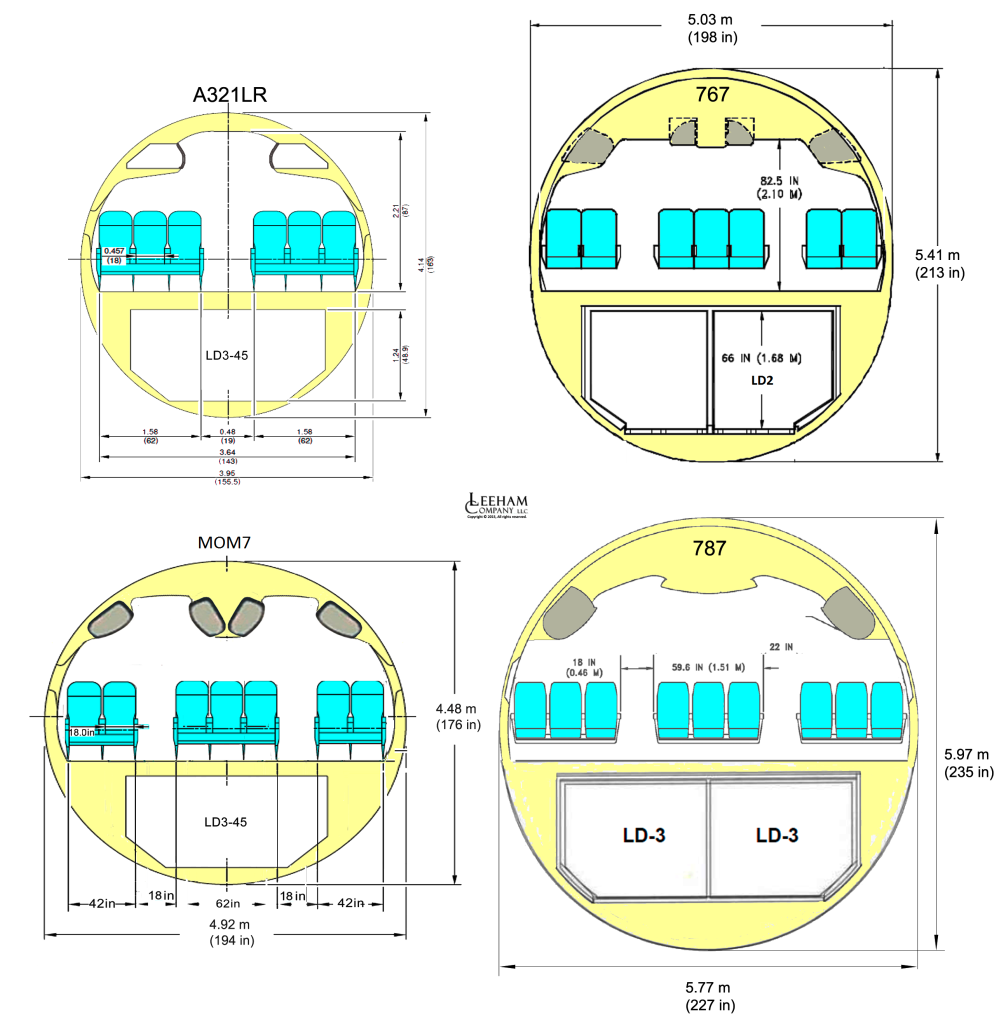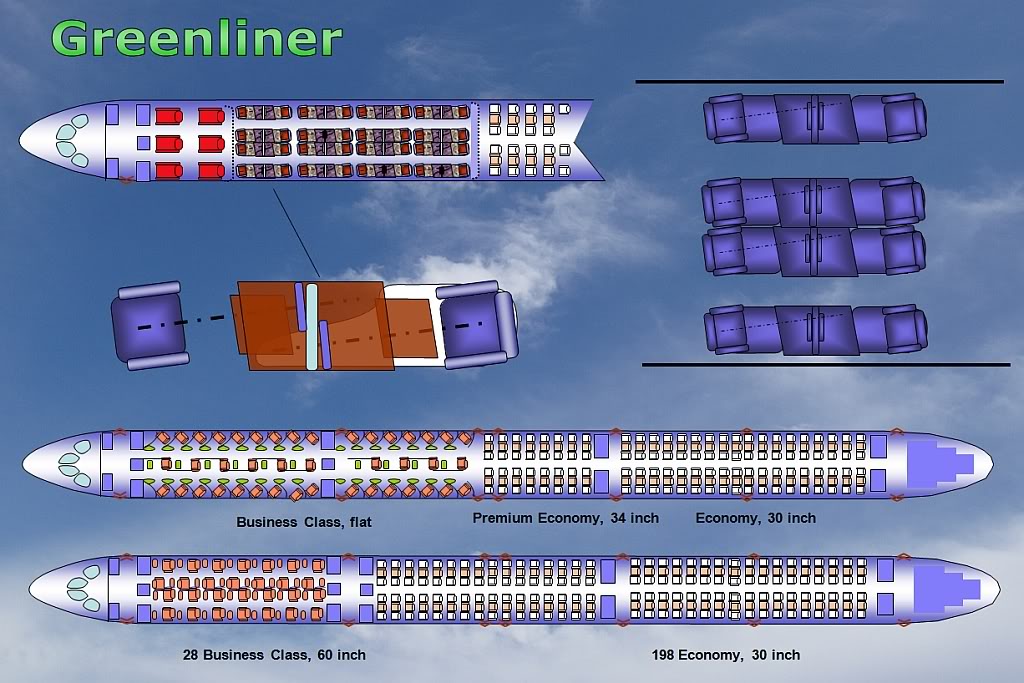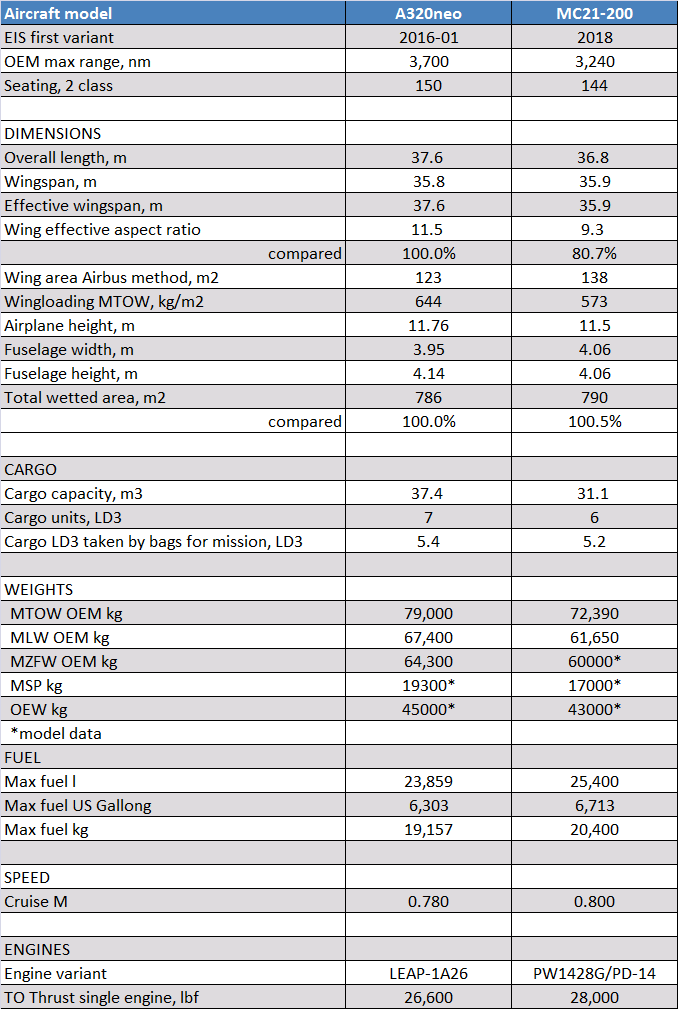RJMAZ wrote:The wing does can have a lower angle of attack the lighter the flying weight becomes.
No. Not in cruise. All modern airliners cruise as high as they can. Unless their climb is engine-limited (true of A343 iirc), the cruise FL limit is dictated by the onset of buffet. For modern airliners, that means Cl = ~.5 (slightly higher for thicker-winged and slower NB's), which means a lighter wing cruises higher to reach its buffet limit. In short, airliners have a maximum Cl and nearly always climb until they hit that limit at level cruise. Equal Cl means equal angle of attack (in cruise configuration). This is why an airliner's initial cruise on a max-range mission is lower than on a shorter-range mission (if you don't believe, go on FlightAware and look at the flight logs for, say, a 77W on DXB-ORD versus on DXB-BOM.).
RJMAZ wrote:Removing empty weight from a design DOES improve short haul short efficiency.
OF COURSE IT DOES! Nobody disputes that. But the weight effect holds to the same extent for longhaul. Remove 1% weight from E175 and 1% from 77L and you have the same percentage impact on trip fuel burn - assuming OEW/payload ratio is identical for both.
In fact, however, shorthaul planes are lighter and have denser cabins so the effect of 1% weight burn is lower for, e.g., RyanAir 738's than for ANA 77W's. (pax-only missions).
You must be able to hold in your head a tradeoff between two items: L/D and weight. Instead you're looking at only item (weight) and are ignoring - or are incapable of readily conceiving - the interplay between L/D and weight.
Here I'm only talking about longer/bigger versus shorter/smaller wings only. A full analysis would reach the knock-on effects of higher L/D or lower weight on engines/empennage/LG (and a small effect on fuselage weight).
RJMAZ wrote:The wing can then be made smaller and still maintain the same lift to drag of the original long range design
Yes, the wing COULD be made smaller at constant L/D. (If empennage/engine shrinkage outweighs wing shrinkage)
But you may have a fundamental misconception of what L/D is. It IS NOT impacted by weight AT ALL.
Your plane will reach optimal L/D at Cl=~.5. Whether that occurs at FL31 (heavier payload and/or longer mission) or FL37(lighter payload and/or shorter mission) does not matter. L/D will always be the same; weight (=lift at cruise) and therefore drag will be higher the lower you cruise.
RJMAZ wrote:Weight reduction in the fuselage reduces wing root bending moment to also reduce. This allows the wingbox to be much lighter. The biggest payload in the fuselage is fuel.
Very basic point: the wing is tested for bending moment at Maximum Zero Fuel Weight - fuel in the fuselage does not matter when your testing condition stipulates ZERO FUEL.*
*some small reserve is assumed, but those last drops of fuel would NEVER be stored in the center wingbox.
RJMAZ wrote:You can run this loop many times. The first loop might remove 10% empty weight, the second loop 5%, the third loop 2.5%. So you don't stop at 10% and call it a day.
[/quote]
Dude I have posted enormously byzantine (by a.net standards) spreadsheets that run this loop via iterative Excel calculations. I am very familiar with the concept.
--------------------------------------------------------------------------------------------------------------------------
Most else you say goes to empty weight, not a weight/L/D tradeoff re wing span and size.
I like your enthusiasm here and I don't intend meanness in saying this, but I can't have a dialogue with you where we disagree about the nature of L/D.
Stanford Aerodynamics Department used to have a course summary with lecture notes to which I could refer anyone for basic aero/engineering stuff (and from which I started to learn this stuff). It disappeared last year. For now, the best "Airplanes 101" I can recommend is Leeham Bjorn's series, linked to in my reply to Keesje.
As someone who spent years and hours trying to figure this stuff out, all the while posting some nonsense here (I can link to embarrassing posts by me if you'd like), I can't strongly enough reccommend renting/buying an aerodynamics textbook and investing some hours into it.
---------------------------------------
On the ultimate issue, I don't disagree that a short-range B787 could be a good MoM entry. As you say, lowering MTOW (due to both range and SFC) will save weight in wing, engines, empennage, and landing gear. It will decrease Swet in engines (maybe? - Ultrafan will have huge nacelles) and in empennage - thereby increasing L/D. And I agree the 787-3 could have been better had Boeing invested $billions in giving it a customized fuselage/empennage/LG/engines/wing.
The only thing I disagree with you about - aside from how planes fly lol - is whether and to what extent the wing's planform (span, sweep, area) should change. That's issue turns on weight vs. L/D tradeoffs. It just does, sorry if you don't see that.
The marginal benefit of shorter, lighter, smaller wing might not be sufficient to justify an extra $3bn in development cost and the airline acquisition cost delta necessary to justify the investment.


















 What's the point?
What's the point?

